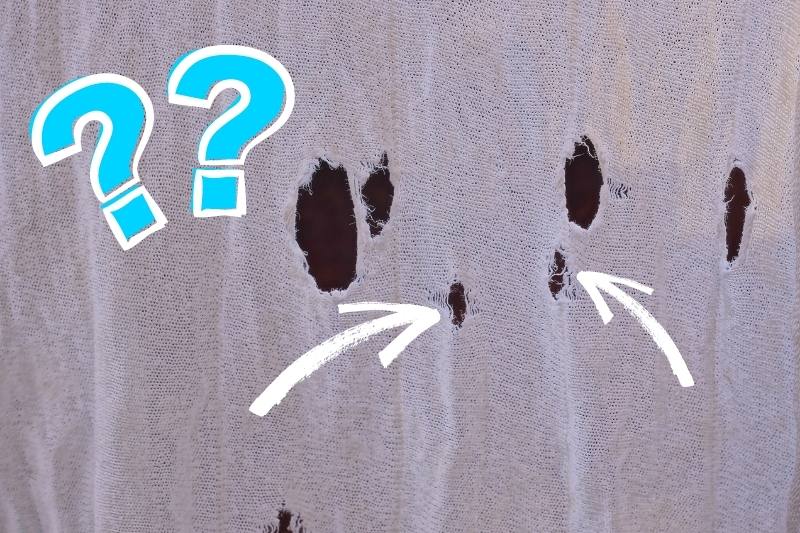Do you keep finding small holes and tears in the front of your t-shirts for no apparent reason? If you don’t remember snagging them and you don’t have moths in your wardrobe, there are several possible causes.
In this post, we’ll touch on each one before covering six different ways to prevent tiny t-shirt holes from developing in future. Read on to learn more.
Why Do I Keep Getting Tiny Holes in my T-Shirts?
1. Friction from buttons and belts
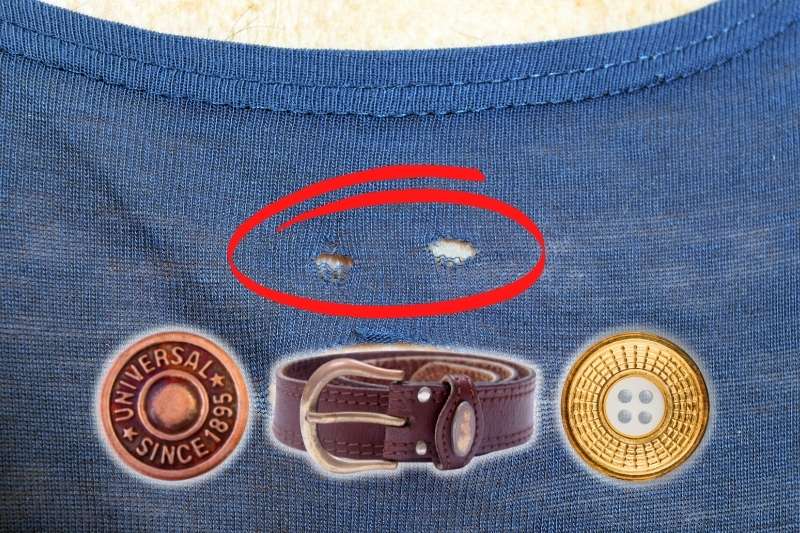
The number one reason for tiny holes in the front of your t-shirts is friction from the metal hardware on jeans and trousers. Buttons, belts, studs and zips can wear the inside of cotton t-shirts and thin knits, eventually leading to holes.
On top of that, leaning against counter tops or wearing seatbelts and bags that rub against the material will quicken the process.
2. Poor quality fabric
Many cheap t-shirts are made of a thin material, woven with a single thread. This means that the more you wash and wear them, the more likely they are to wear through. These fabrics are also more prone to bobbling, which can lead to catches and small holes in your clothing.
3. High spin speed or overloaded cycle
Only notice holes in your t-shirts after washing them? Then your laundry cycle may be to blame. Spinning items on too high a setting can pull at the fibres or lead to clothes getting caught on each other, causing friction. This is especially true if you overload your machine.
4. Drum or seal damage
If your washer’s seal is worn, clothing may get trapped between the seal and drum. As the drum spins, the fabric will get tugged and potentially damaged. Plus, if there are any rough edges inside the drum, your t-shirts may develop catches or small tears in the wash. This can happen if you’ve previously washed something sharp by mistake, such as a set of keys.
How Do I Keep my Clothes from Getting Holes in the Washer?
Read the care label
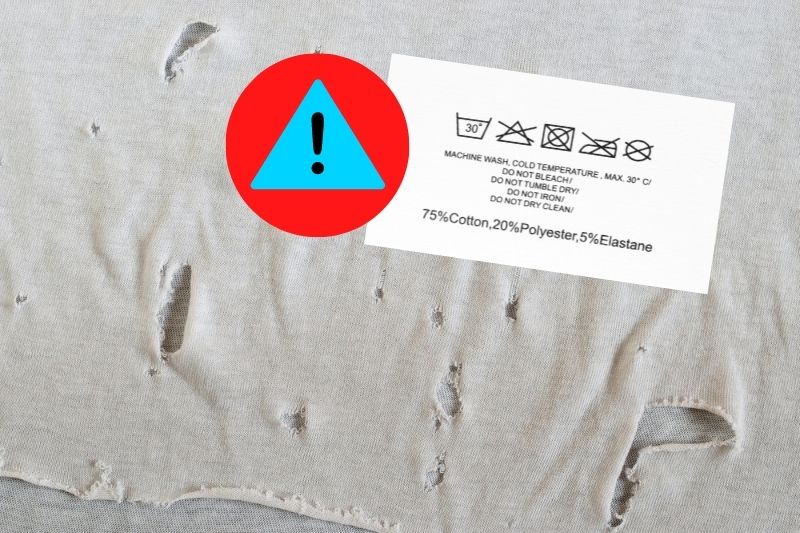
Before you put any new clothes in your washing machine, take a second to study the care label. This will tell you the recommended cycle and what temperature you should wash at.
Delicate items, in particular, may have specific requirements such as a gentle detergent and a cool, slow cycle. For cotton t-shirts, always try to stick to spin speeds of around 600-800 revolutions per minute to avoid wearing the fibres and separate heavier items like jeans.
Make sure all fastenings are done up
Another tip is to fasten all zips, buttons and poppers before putting your clothes in the wash. If left open, they may catch on soft fabrics and lead to tears. Hooks and eyes like you find on bra fastenings are also a common cause of snagging, so make sure they’re done up too.
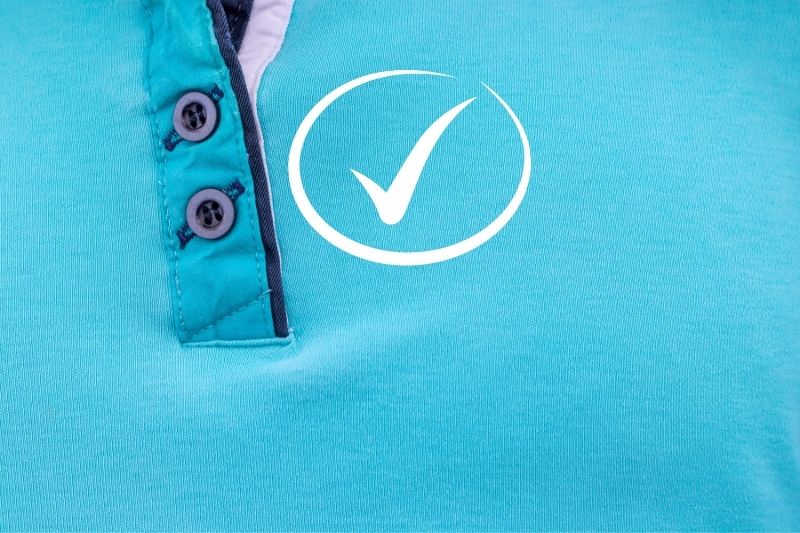
Mesh laundry bags are useful for items that have a high risk of being damaged when washed, like silk shirts or lace-trimmed tops. If you don’t have one to hand, you can also place delicate clothing inside a white cotton pillowcase and secure it with an elastic band or shoe lace. Just make sure you leave enough space for the items to move freely and don’t use a coloured one that could run.
Check your washer for damage
If you’re finding lots of catches in your t-shirts, it may be a good idea to check the inside of your washer for any sharp edges. To do this, take an old pair of tights or a cloth and run it around the drum by hand. If the material snags on anything, that could well be the problem and you’ll need to investigate it further with the help of an engineer.
Likewise, you should check the condition of your rubber door seal regularly. If small items like socks frequently get stuck under it during wash cycles, it may be loose and need replacing.
Other Ways to Stop Pinholes in Clothes
Consider how you wear your clothes and with what
While this may sound obvious, avoiding trousers with buttons or exposed zips is a free and simple way to prevent holes in the front of your t-shirts. Elasticated skirts and trousers or those with hidden closures are ideal.
You can also get belts without any metal fastenings at all. Alternatively, try tucking your top into your jeans for a stylish look that will also prevent wear.
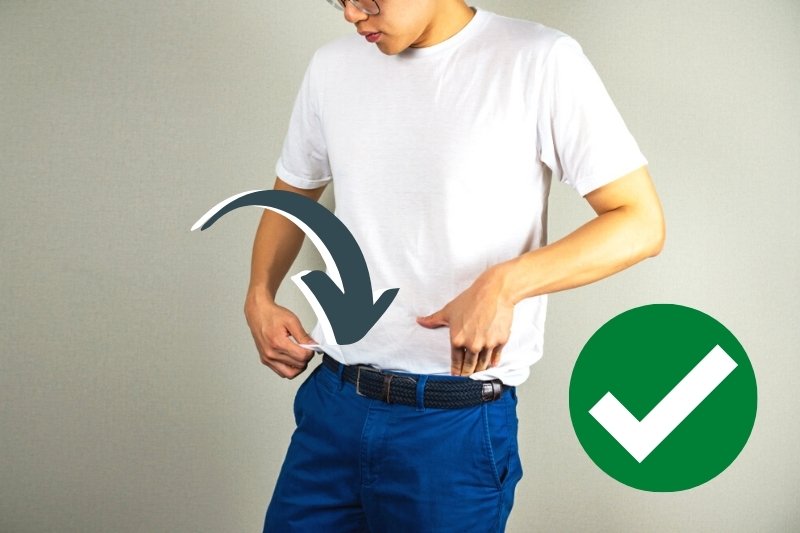
Add button covers
Another way to protect your t-shirts from tiny holes caused by the metal fastening on your jeans is to use button covers. Silicone covers by Holé provide a discreet cushion from friction and will fit jeans buttons measuring between 14 – 22mm in diameter. Plus, they can be left on in the wash for ease! Just bear in mind that they’re only effective if you don’t need to wear a belt.
Apply fusible interfacing
If neither of the two options above are going to work for you, there is a third solution. Perhaps the most effective of the three, fusible interfacing adds a protective barrier between your t-shirt and your jeans.
Simply cut a piece of lightweight, iron-on interfacing to cover the part of your top that’s likely to wear. Then turn your t-shirt inside out, place the rough side of the interfacing onto the fabric and use an iron set to a medium heat to adhere it.
When you’re done, it will be invisible from the outside and your buttons will rub against the interfacing instead of your t-shirt! This product can also be used to repair existing holes without the need for sewing. All you need to do is bring the two sides of the tear together and use a small piece of interfacing to mesh them together from the inside. It’s as simple as that!
We hope this post has helped you get to grips with why you keep finding tiny holes in your t-shirts and how best to prevent them. To find more useful clothing care tips and laundry advice, browse our blog.

A proud Yorkshire lass with a love for movies, music and cosy nights in! Once a self-confessed avoider of cleaning, she’s always on the lookout for new ways to make household chores as quick and simple as possible.
